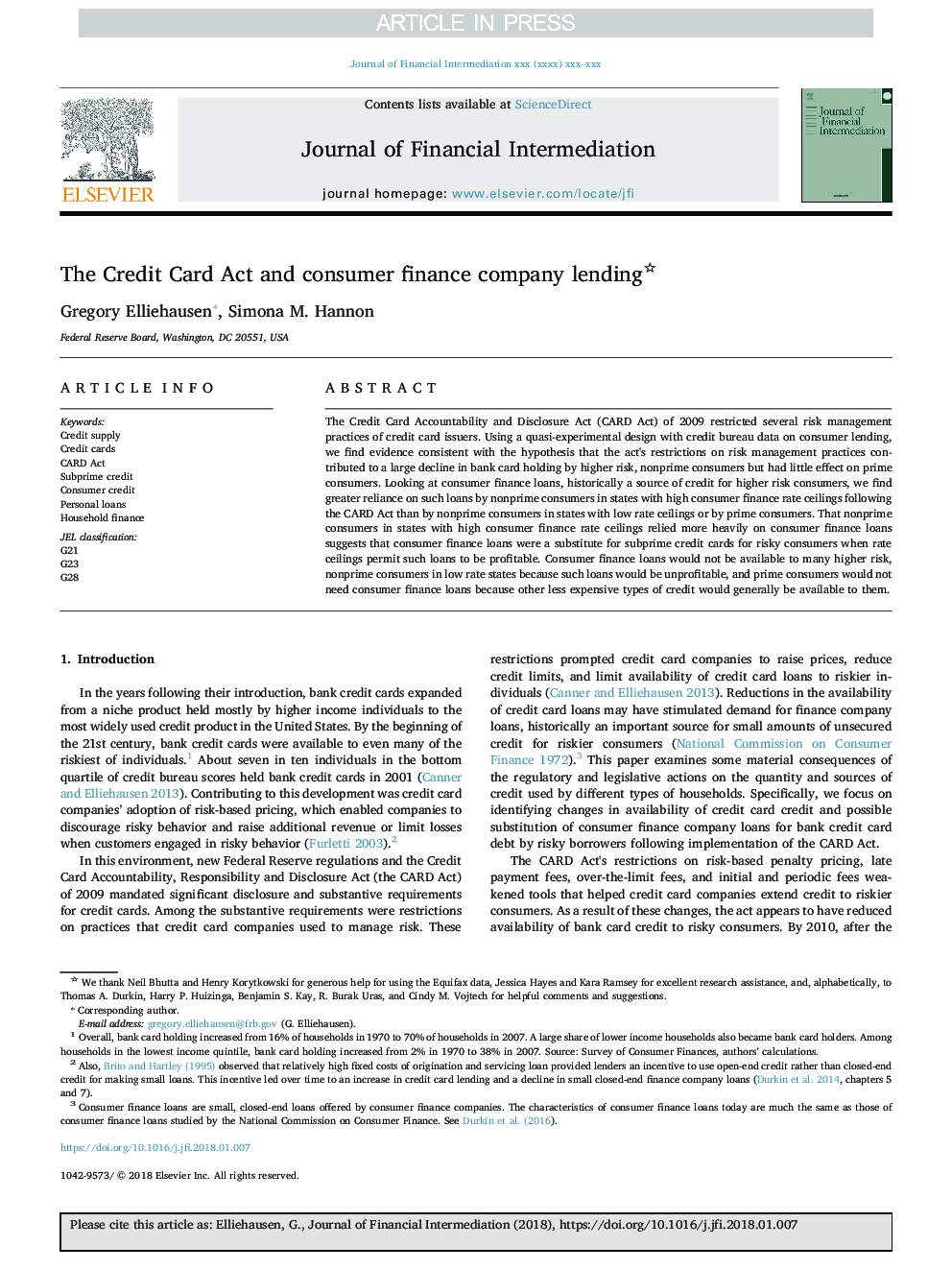| Article ID | Journal | Published Year | Pages | File Type |
|---|---|---|---|---|
| 7362266 | Journal of Financial Intermediation | 2018 | 11 Pages |
Abstract
The Credit Card Accountability and Disclosure Act (CARD Act) of 2009 restricted several risk management practices of credit card issuers. Using a quasi-experimental design with credit bureau data on consumer lending, we find evidence consistent with the hypothesis that the act's restrictions on risk management practices contributed to a large decline in bank card holding by higher risk, nonprime consumers but had little effect on prime consumers. Looking at consumer finance loans, historically a source of credit for higher risk consumers, we find greater reliance on such loans by nonprime consumers in states with high consumer finance rate ceilings following the CARD Act than by nonprime consumers in states with low rate ceilings or by prime consumers. That nonprime consumers in states with high consumer finance rate ceilings relied more heavily on consumer finance loans suggests that consumer finance loans were a substitute for subprime credit cards for risky consumers when rate ceilings permit such loans to be profitable. Consumer finance loans would not be available to many higher risk, nonprime consumers in low rate states because such loans would be unprofitable, and prime consumers would not need consumer finance loans because other less expensive types of credit would generally be available to them.
Related Topics
Social Sciences and Humanities
Business, Management and Accounting
Strategy and Management
Authors
Gregory Elliehausen, Simona M. Hannon,
